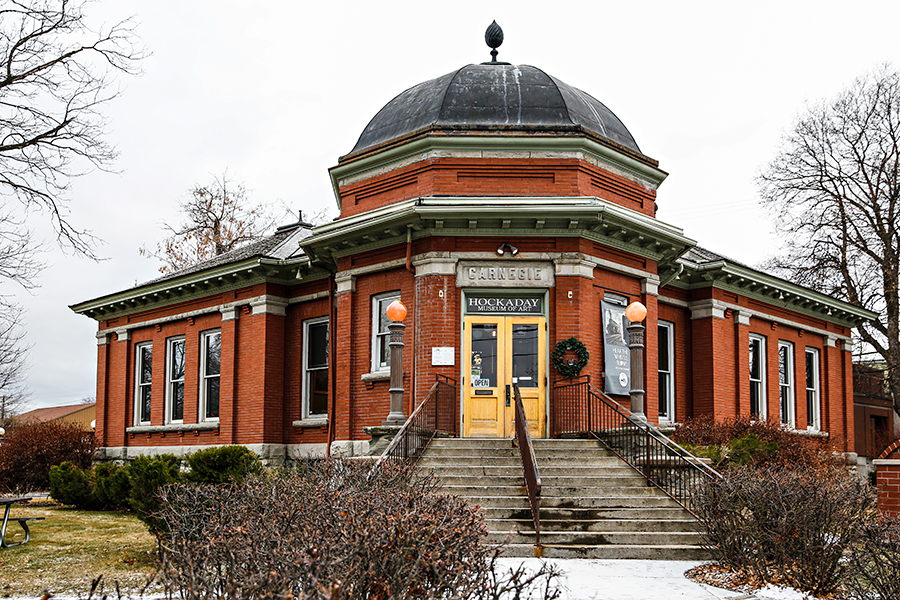At the dawn of the 20th century, Kalispell was a growing metropolis and with that growth came the need for a library to educate and entertain the masses.
In 1894, a local women’s club whose members included Alicia Conrad, wife of Kalispell’s founder, established the town’s first circulating library. The mobile book depository survived until 1897 when the club was able to establish the Kalispell Public Library. But that original library proved to be small and the women’s club, which “bore the burden” of maintaining it, was unable to keep it going, so the city turned to the richest man on earth, industrialist Andrew Carnegie, for help.
The story of how Carnegie helped build Kalispell’s library — today home to the Hockaday Museum of Art — is now being told at a new exhibit at the museum throughout the month of December. The exhibit has been made possible by the Montana History Foundation and coincides with the release of a new book, “The Best Gift: Montana’s Carnegie Libraries” by author and historian Kate Hampton.
In the late 1800s, Carnegie, who had become the world’s richest man thanks to the steel-making industry, began building libraries around the world. Carnegie believed that no one should die rich and instead wanted his fortune to help the communities that had helped him. In 1883, he funded the construction of a library in his hometown of Dunfermline, Scotland before building libraries in and around Pittsburgh, where he had built his fortune. Starting in 1898, Carnegie began to fund the construction of libraries all over the world. Over the next quarter century, Carnegie would fund the construction of more than 2,500 libraries, including 1,600 in the United States and 17 in Montana.
In November 1901, Kalispell leaders asked Carnegie to fund a new public library. As part of the requirements to receive the grants, the city needed to purchase a piece of land for it and vow to maintain it for as long as it was a library. Carnegie’s personal secretary, James Bertram, responded on his boss’s behalf and offered Kalispell $10,000 for a library. The community accepted and quickly began planning for its new library. At the time, besides the requirement that the community buy land and maintain the facility, there were little restrictions on the library’s appearance. Later on, Bertram, who managed nearly all of Carnegie’s philanthropic efforts, came up with a more standardized design for towns to follow. According to Hampton, the historian, the libraries built in Montana after 1909 featured that standard design.
Kalispell’s library was designed by George Shanley and originally featured a large dome over the entire structure. That design would have surpassed the budget, so Kalispell asked Bertram for more money. Bertram rejected the offer, and the architect was asked to come up with something more modest. Shanley redesigned the structure with a smaller dome. With the blueprints in hand, Kalispell began construction of its new library. It opened in January 1904.
In 1907 and 1910, as the needs of Kalispell’s library continued to grow, the city asked Carnegie for money to expand, but the requests were denied. In the 1960s, Kalispell’s library merged with Flathead County’s and moved into its current location near downtown Kalispell. The Carnegie building was turned into an art museum in 1969.
Today, 15 Carnegie libraries survive in Montana. Hampton, who currently works for the Montana Historical Society and has written multiple National Register of Historic Places applications for the libraries, jumped at the chance to write a book about the buildings when asked by the Montana History Foundation. The book and its companion traveling exhibit are part of a yearlong celebration of the libraries.
For more information about the exhibit, visit HockadayMuseum.org or call (406) 755-5268.
